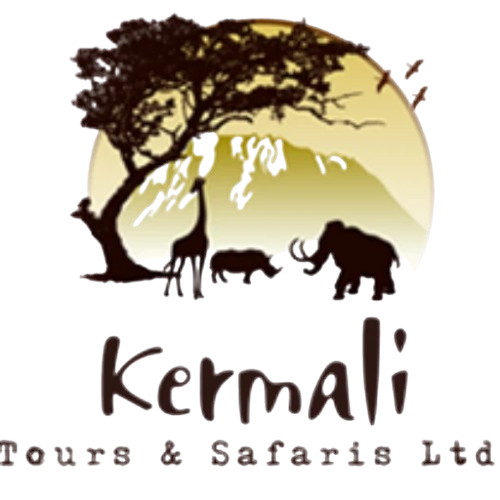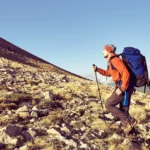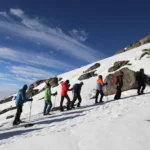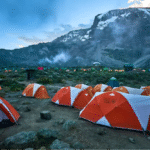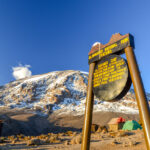The Great Wildebeest Migration is one of the most awe-inspiring natural phenomena on the planet, captivating both wildlife enthusiasts and adventure seekers alike. Kermali Tours & Safaris Ltd invites you on a journey through this remarkable event, providing you with a comprehensive guide to understand and experience this spectacle of nature in Tanzania.

1. Understanding the Migration:
- The Participants:
- Wildebeest: Over 1.5 million wildebeest are at the heart of this migration, joined by zebras and gazelles.
- Predators: Lions, leopards, cheetahs, and hyenas closely follow the herds, making for incredible wildlife encounters.
- The Cycle:
- Seasonal Movement: The migration is a continuous cycle between Tanzania’s Serengeti National Park and Kenya’s Maasai Mara Reserve.
- Rainfall Influence: The herds follow the rains, moving in search of fresh grazing and water.
2. The Stages of the Migration:
- Calving Season:
- December – March: Witness the wildebeest calving season in the southern Serengeti, as thousands of newborns enter the world.
- Grumeti River Crossing:
- June – July: The migration crosses the Grumeti River in the western Serengeti, showcasing dramatic river crossings and predator-prey interactions.
- Mara River Crossing:
- July – October: The climax of the migration unfolds as herds brave the crocodile-infested Mara River to reach Kenya’s Maasai Mara.
3. Planning Your Migration Safari:
- Timing is Key:
- Peak Months: Visit from June to October for the Mara River crossings, but remember that exact timing can vary each year.
- Accommodations:
- Strategic Locations: Choose lodges or camps strategically located near the migration’s route for the best viewing opportunities.
- Early Booking: Secure your accommodations well in advance, especially during peak season.
- Guided Safaris:
- Expert Guides: Opt for guided safaris with knowledgeable local safari guides who can predict migration movements and enhance your experience.
4. Wildlife Photography:
- Camera Gear:
- Telephoto Lenses: Bring telephoto lenses to capture close-ups of animals during river crossings.
- Bean Bags and Tripods: Use bean bags or tripods for stability during extended photo sessions.
- Patience and Timing:
- Early Mornings: Set out early in the morning when animals are active and lighting is ideal for photography.
- Wait for Action: Be patient during river crossings, as the action can be sudden and brief.
5. Responsible Viewing:
- Respect Wildlife:
- Maintain a safe and respectful distance from animals to avoid stress or disruption to their natural behaviors.
- Leave No Trace:
- Follow responsible tourism practices, including proper waste disposal and respect for the environment.
Conclusion:
The Great Wildebeest Migration is a spectacle that has to be seen to be believed, and Tanzania offers the perfect stage for this remarkable event. With careful planning, expert guidance, and a deep respect for nature, you can witness this incredible journey of survival and adaptation up close. Join Kermali Tours & Safaris Ltd for an unforgettable experience as you follow the footsteps of millions of wildebeest on their epic odyssey through the Serengeti-Maasai Mara ecosystem. It’s a journey that will leave you with memories to last a lifetime.

